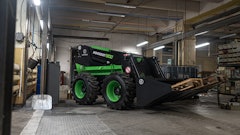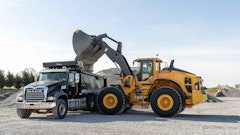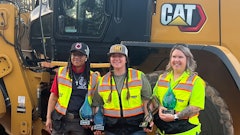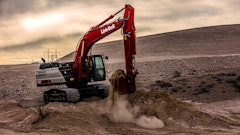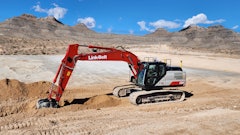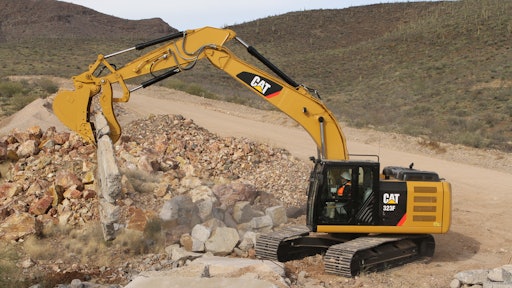
When using earthmovers such as excavators and backhoe-loaders to lift and place objects, it's critical to avoid exceeding the lift capacity limits of the machine. However, it’s hard to stay within those limits if you don’t know the total weight of the load you intend to lift.
“Knowing the weight of the items to be craned is critical to the safe lifting process,” says Ray Peterson, VISTA Training. He notes that nearly all materials delivered to jobsites have weights available from the supplier. “Some precast objects may have the weight marked on them. Weights of concrete pipe or manhole bases and risers are available from the manufacturer or distributor.”
Yet, knowing the weight of the load is typically just the starting point. According to Kent Pellegrini, Caterpillar, calculating total load weight must include the machine configuration. “When lifting with a bucket and a coupler, the total weight of both should be considered and added to the total lifting weight, and referenced back to the manufacturer’s lift chart,” he states. “If lifting with the coupler only, the coupler’s weight must be added to the total weight of the load to be lifted.” Include any add-ons (e.g., hydraulic thumbs) or other additions to the front of the machine that may change the stick or boom weight.
For backhoes, take note of any added weight at the rear of the machine. “Attachments such as a hydraulic thumb add weight to the back of a machine and can reduce the maximum amount of material the backhoe can lift,” says Louann Hausner, John Deere Construction & Forestry. “The operator must consider the weight of the machine and all attachments when assessing load capacity.”
Lift height and reach is also a factor. “When determining the total weight to be lifted, the operator should also take into account the height and reach needed to move the load into place,” Hausner advises. “The lift capabilities of the boom are affected by these factors, which are included in the available lift specs for these machines.”
If the total load weight can’t be determined, proceed with caution. “It is generally recommended when lifting a load of unknown weight that it first be picked close in to the machine, kept close to the ground and slowly extended and swung with no other personnel within a reasonable danger zone,” says Peterson.







